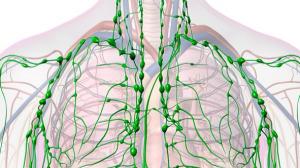Understanding Anastomoses in the Lymphatic System and Their Role in Treatment
In the complex network of the lymphatic system, anastomoses play a vital role in maintaining fluid balance and providing alternate routes for lymph drainage.
SEBASTIAN, FL, UNITED STATES, October 6, 2025 /EINPresswire.com/ -- Understanding Anastomoses in the Lymphatic System and Their Role in Treatment
Introduction
In the complex network of the lymphatic system, anastomoses play a vital role in maintaining fluid balance and providing alternate routes for lymph drainage—especially in cases of damage or dysfunction, such as lymphedema. For clinicians and therapists, understanding lymphatic anastomoses is key to effectively planning and performing manual lymph drainage (MLD) and other therapeutic interventions.
What Are Lymphatic Anastomoses?
In simple terms, anastomoses are natural connections or junctions between lymphatic vessels or pathways. Cross-connections allow lymph to bypass damaged or congested areas and reroute toward healthy, functioning lymph nodes and drainage regions. While anastomoses exist throughout the body, they are essential in the trunk, where regional lymphatic territories—also known as watersheds—are separated by transitional zones.
These watersheds include:
• Sagittal (midline) watershed – divides the body into right and left lymphatic territories
• Transverse (horizontal) watersheds – divide the body into upper and lower quadrants
• Clavicular and inguinal watersheds – mark transitions between trunk and limb regions
Each area contains lymphatic anastomoses that can serve as detours for lymphatic fluid when the primary pathways are compromised.
How Anastomoses Help with Treatment
Anastomoses are critical to lymphatic rehabilitation, particularly in cases of primary or secondary lymphedema, where normal lymph flow is impaired due to congenital factors, surgery, radiation, or trauma. Here's how they support treatment:
1. Facilitating Rerouting in Manual Lymph Drainage (MLD)
During MLD, certified therapists use specific, gentle strokes to stimulate lymph flow toward healthy drainage basins. Knowing the location of functional anastomoses allows them to redirect lymph fluid across watersheds—for example, from the affected side of the trunk to the unaffected side or from a congested arm to the ipsilateral groin area. This rerouting relieves pressure and reduces swelling in compromised areas.
2. Supporting Compensatory Drainage
When lymph nodes are removed or damaged (e.g., after a mastectomy), the body's ability to drain lymph is diminished. Anastomoses can serve as natural bypasses, allowing adjacent lymphatic territories to assist in fluid transport, especially when encouraged through therapy and compression.
3. Enhancing Outcomes of Complex Decongestive Therapy (CDT)
Anastomotic rerouting is a cornerstone of CDT, the gold standard for lymphedema care. By combining MLD with compression bandaging, skincare, and exercise, therapists leverage these connections to optimize drainage patterns and improve long-term symptom control.
4. Guiding Surgical Approaches
Knowledge of lymphatic anastomoses guides surgeons in selecting target vessels or areas with the best potential for restoring drainage in surgical interventions like lymphovenous bypass or vascularized lymph node transfer.
Clinical Implications
Understanding and utilizing lymphatic anastomoses is not just academic—it's convenient. For patients with compromised lymphatic systems, these alternate routes often determine whether fluid can be redirected effectively and whether treatment will be successful. For therapists, anastomoses guide the hands-on techniques and flow direction during MLD, making anatomical knowledge essential for achieving clinical goals.
Conclusion
Lymphatic anastomoses are more than anatomical curiosities—they're functional, dynamic pathways that provide hope for patients dealing with lymphedema's challenges. Whether through manual techniques, compression, or surgical strategies, tapping into the body's natural detour system can significantly improve outcomes and quality of life for those with lymphatic dysfunction.
Interested in taking an ACOLS Course?
The Academy of Lymphatic Studies offers certification courses in lymphedema management and manual lymphatic drainage. CEU’s are available for nurses in select states!
For more information, course listings, and to register for an upcoming course, Click Here!
Academy of Lymphatic Studies
Academy of Lymphatic Studies
email us here
Visit us on social media:
LinkedIn
Instagram
Facebook
Legal Disclaimer:
EIN Presswire provides this news content "as is" without warranty of any kind. We do not accept any responsibility or liability for the accuracy, content, images, videos, licenses, completeness, legality, or reliability of the information contained in this article. If you have any complaints or copyright issues related to this article, kindly contact the author above.


